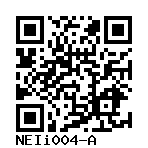iPSC-F41
NEIi004-A
General
Cell Line |
|
| hPSCreg name | NEIi004-A |
| Cite as: | NEIi004-A (RRID:CVCL_C1V0) |
| Alternative name(s) |
iPSC-F41
|
| Cell line type | Human induced pluripotent stem cell (hiPSC) |
| Similar lines | No similar lines found. |
| Last update | 11th February 2025 |
| User feedback | |
Provider |
|
| Generator | National institutes of Health (NEI) |
| Owner | National Institutes of Health (NIH) |
External Databases |
|
| BioSamples | SAMEA12816322 |
| Cellosaurus | CVCL_C1V0 |
| Wikidata | Q114312504 |
General Information |
|
| Publications | |
| * Is the cell line readily obtainable for third parties? |
Yes Cell line can only be used in: Research area
Research use: allowed
Clinical use: not allowed
Commercial use: not allowed
|
Donor Information
General Donor Information |
|
| Sex | female |
Phenotype and Disease related information (Donor) |
|
| Diseases | A disease was diagnosed.
|
Karyotyping (Donor) |
|
| Has the donor karyotype been analysed? |
Yes
|
External Databases (Donor) |
|
| BioSamples | SAMEA12816323 |
Ethics
| Has informed consent been obtained from the donor of the embryo/tissue from which the pluripotent stem cells have been derived? | Yes |
| Was the consent voluntarily given? | Yes |
| Has the donor been informed that participation will not directly influence their personal treatment? | Yes |
| Can you provide us with a copy of the Donor Information Sheet provided to the donor? | No |
| Do you (Depositor/Provider) hold the original Donor Consent Form? | Yes |
| Please indicate whether the data associated with the donated material has been pseudonymised or anonymised. | pseudonymised |
| Does consent explicitly allow the derivation of pluripotent stem cells? | Yes |
| Does consent prevent CELLS DERIVED FROM THE DONATED BIOSAMPLE from being made available to researchers anywhere in the world? | No |
| How may genetic information associated with the cell line be accessed? | Open Access |
| Will the donor expect to receive financial benefit, beyond reasonable expenses, in return for donating the biosample? | No |
| Has a favourable opinion been obtained from a research ethics committee, or other ethics review panel, in relation to the Research Protocol including the consent provisions? | No |
| For generation of the cell line, who was the supplier of any recombined DNA vectors or commercial kits used? |
hIPSC Derivation
General |
|
| Source cell line name | Human Skin fibroblast cells |
| Source cell type |
Any primary mitochondrial disease in which the cause of the disease is monoallelic or biallelic variants in the OPA1 gene. While optic atrophy is present in most affected cases, OPA1 is a mitochondrial protein and thus features of this disease include abnormal mitochondrial morphology and multiple mitochondrial DNA deletions, and can affect other organ systems and. Extraocular features can include progressive sensorineural hearing impairment, cognitive impairment, peripheral neuropathy, myopathy, ragged-red muscle fibers, and exercise-induced lactic acidemia, while additional ocular features can include progressive visual loss, central scotoma, and color vision abnormalities.; Per criteria outlined by the ClinGen Lumping and Splitting Working Group, we found the molecular mechanism (loss of function variants in OPA1) to be consistent among apparently unrelated patients, while related patients harboring either biallelic or monoallelic OPA1 variants were affected with optic atrophy. The phenotypic variability between them appeared to represent a spectrum of disease rather than separate disease entities. Therefore, affected cases harboring monoallelic or biallelic OPA1 variants have been lumped into a single disease entity, referred to as OPA1-related optic atrophy with or without extraocular features.
|
Reprogramming method |
|
| Vector type | Non-integrating |
| Vector | Sendai virus |
| Genes | |
| Is reprogramming vector detectable? |
No |
| Methods used |
PCR
|
Vector free reprogramming |
|
Other |
|
| Derived under xeno-free conditions |
Unknown |
| Derived under GMP? |
Unknown |
| Available as clinical grade? |
Unknown |
Culture Conditions
| Surface coating | Vitronectin |
| Feeder cells |
No |
| Medium |
Essential 8™ Flex
|
| Has Rock inhibitor (Y27632) been used at passage previously with this cell line? | Yes |
| Has Rock inhibitor (Y27632) been used at cryo previously with this cell line? | No |
| Has Rock inhibitor (Y27632) been used at thaw previously with this cell line? | Yes |
Characterisation
Analysis of Undifferentiated Cells
| Marker | Expressed | Immunostaining | RT-PCR | Flow Cytometry | Enzymatic Assay | Expression Profiles |
| SOX2 |
Yes |
|||||
| SSEA-4 |
Yes |
|||||
| NANOG |
Yes |
|||||
| POU5F1 (OCT-4) |
Yes |
|||||
| TRA 1-60 |
Yes |
|||||
| TRA 1-81 |
Yes |
Morphology pictures
Differentiation Potency
Genotyping
Karyotyping (Cell Line) |
|
| Has the cell line karyotype been analysed? |
Yes
|
Other Genotyping (Cell Line) |
|


Login to share your feedback, experiences or results with the research community.